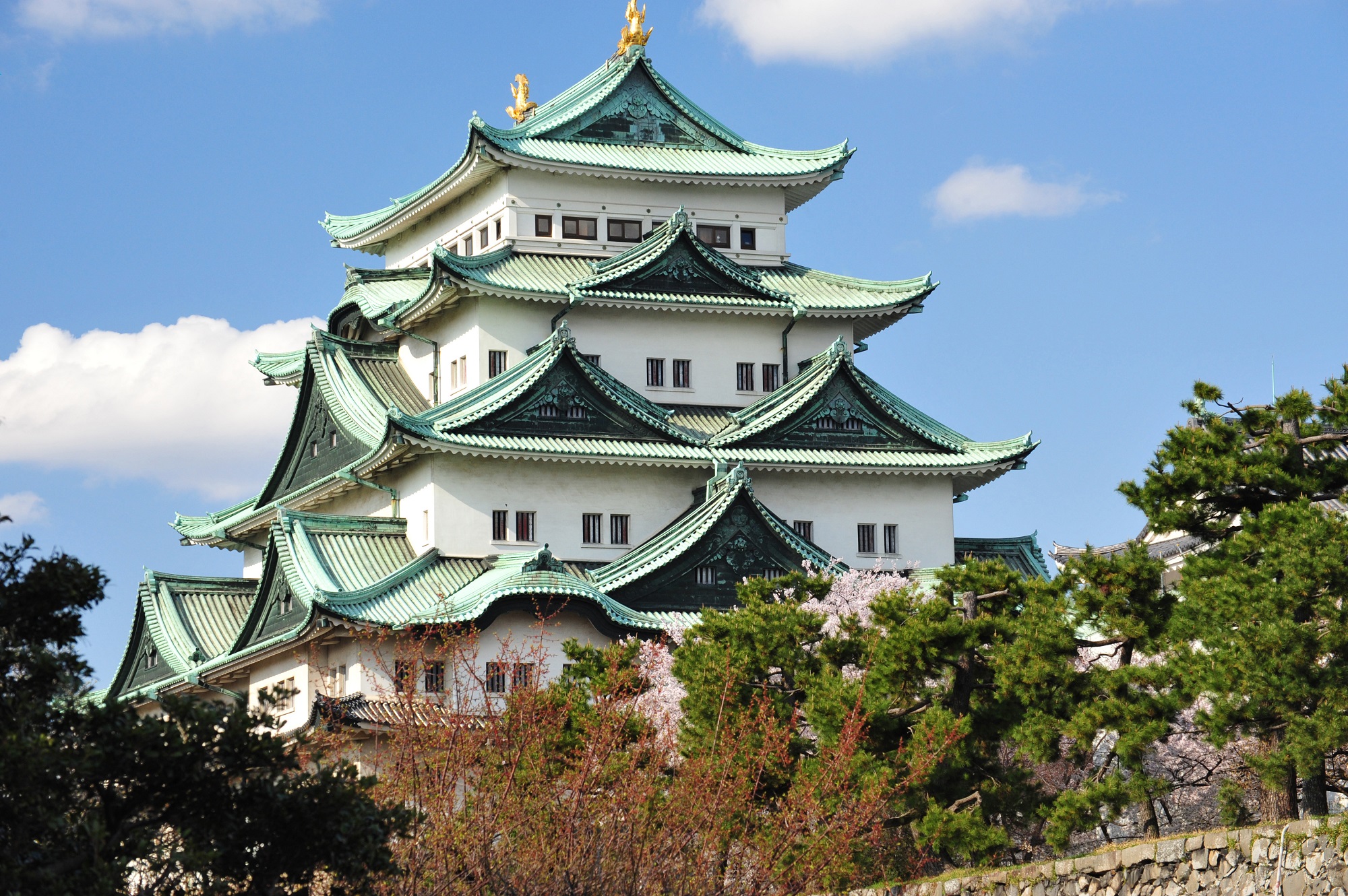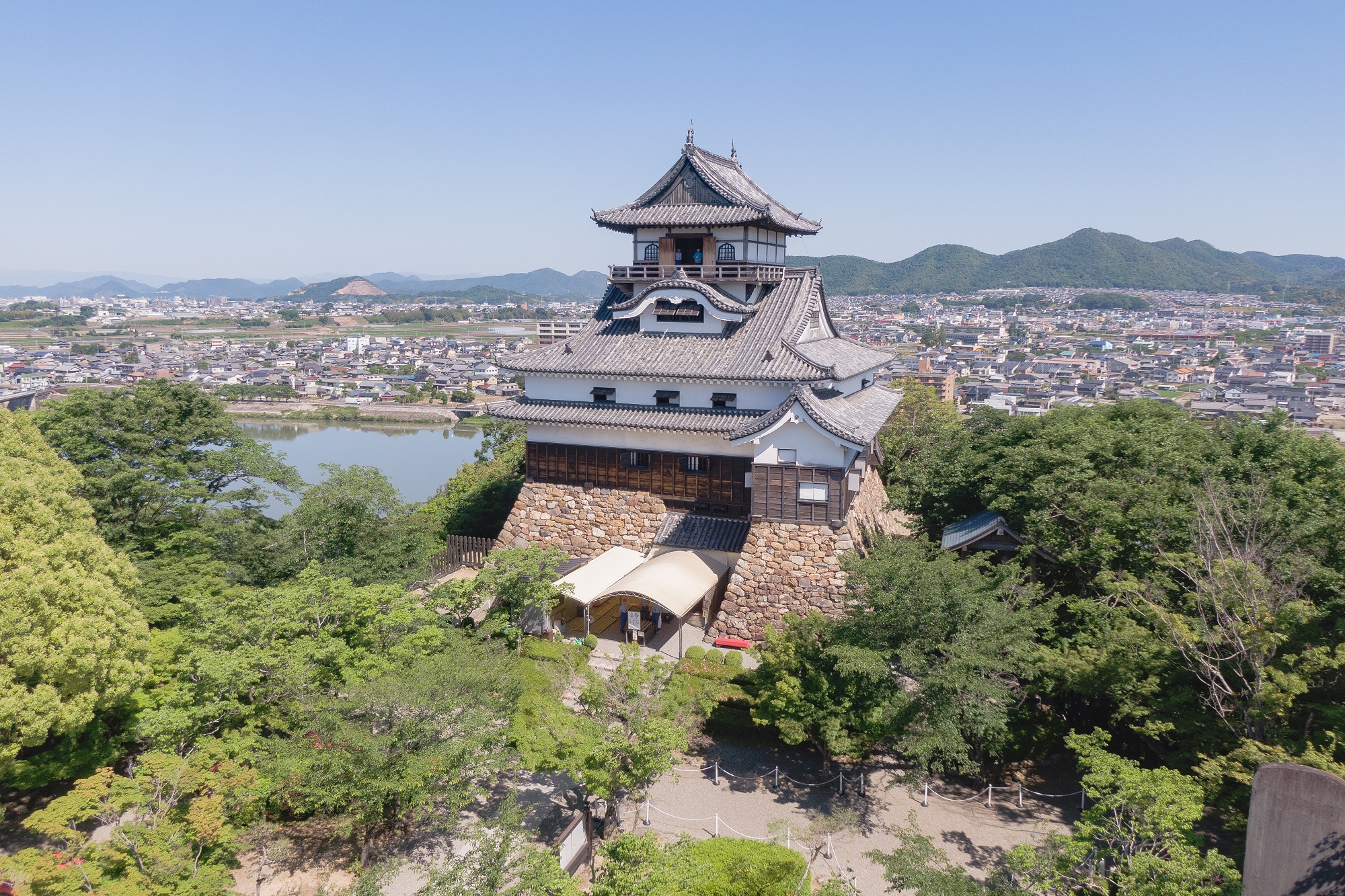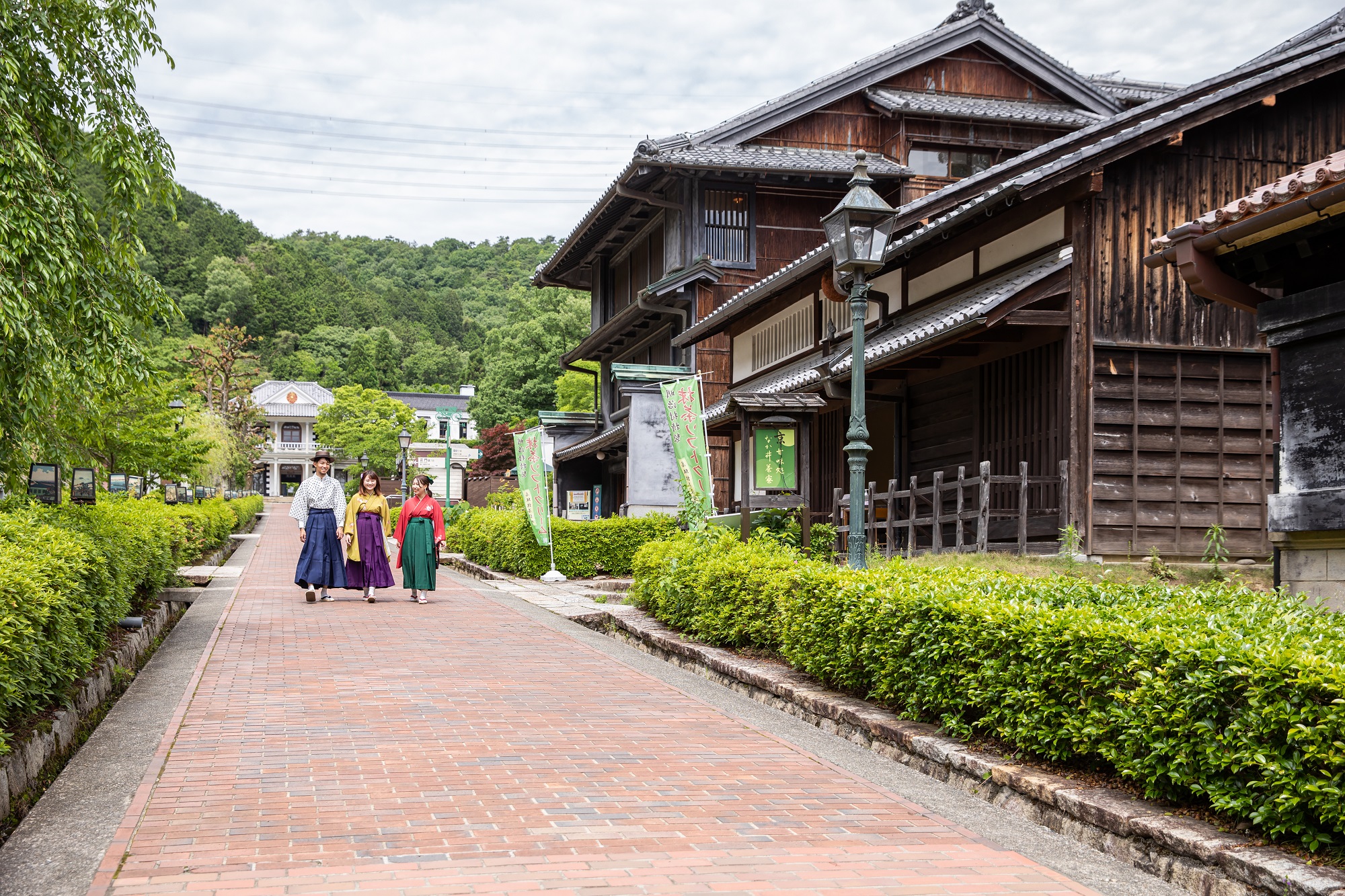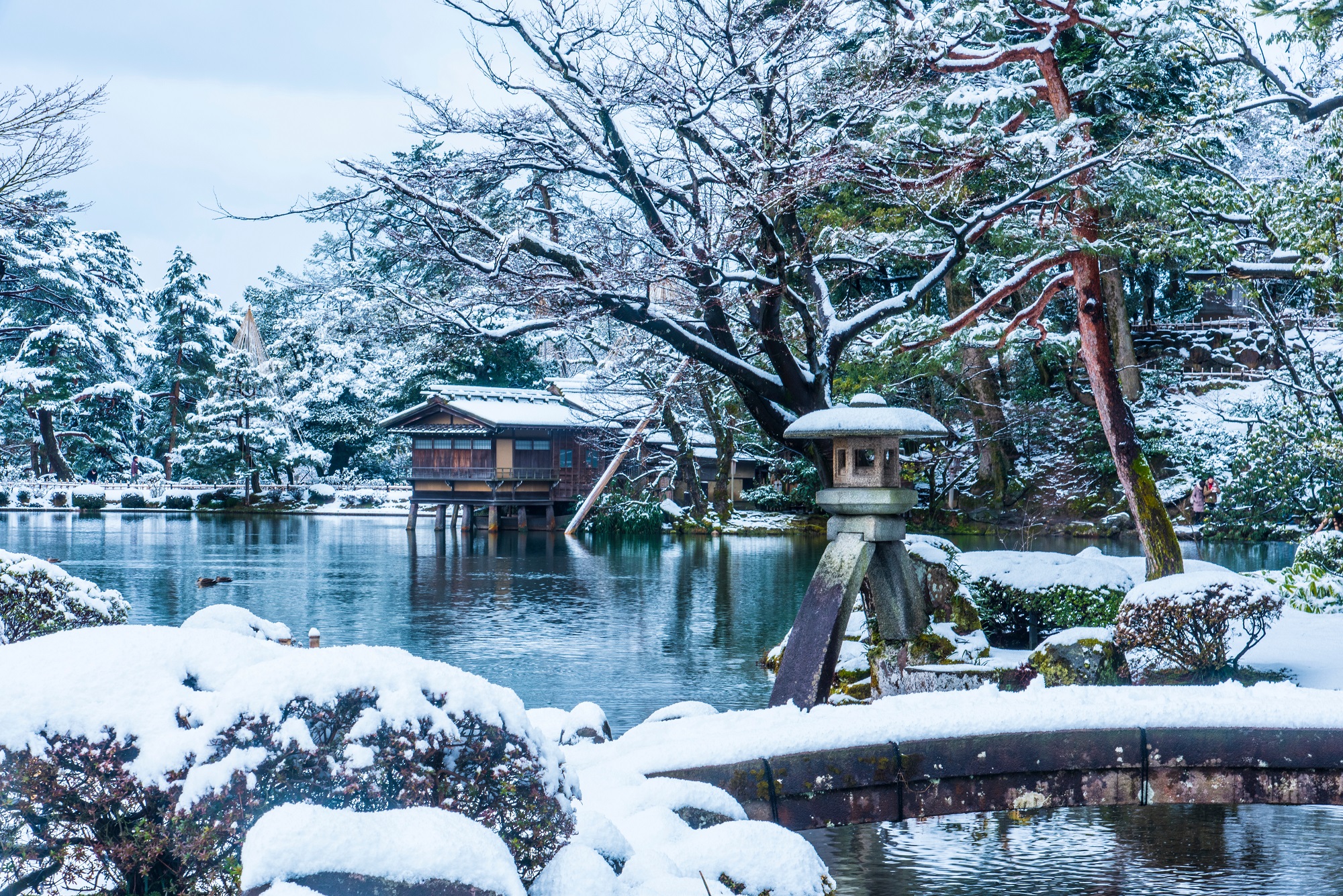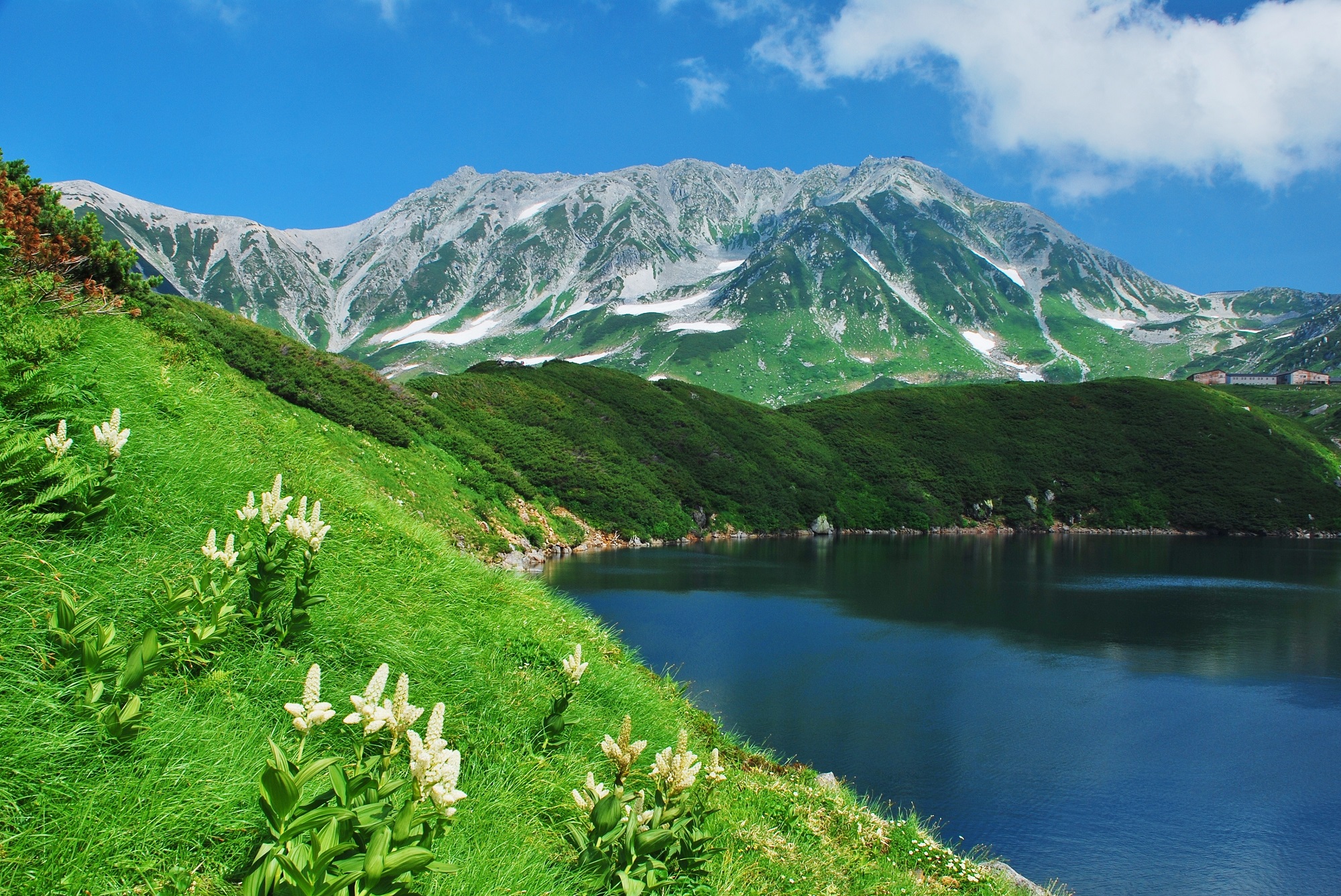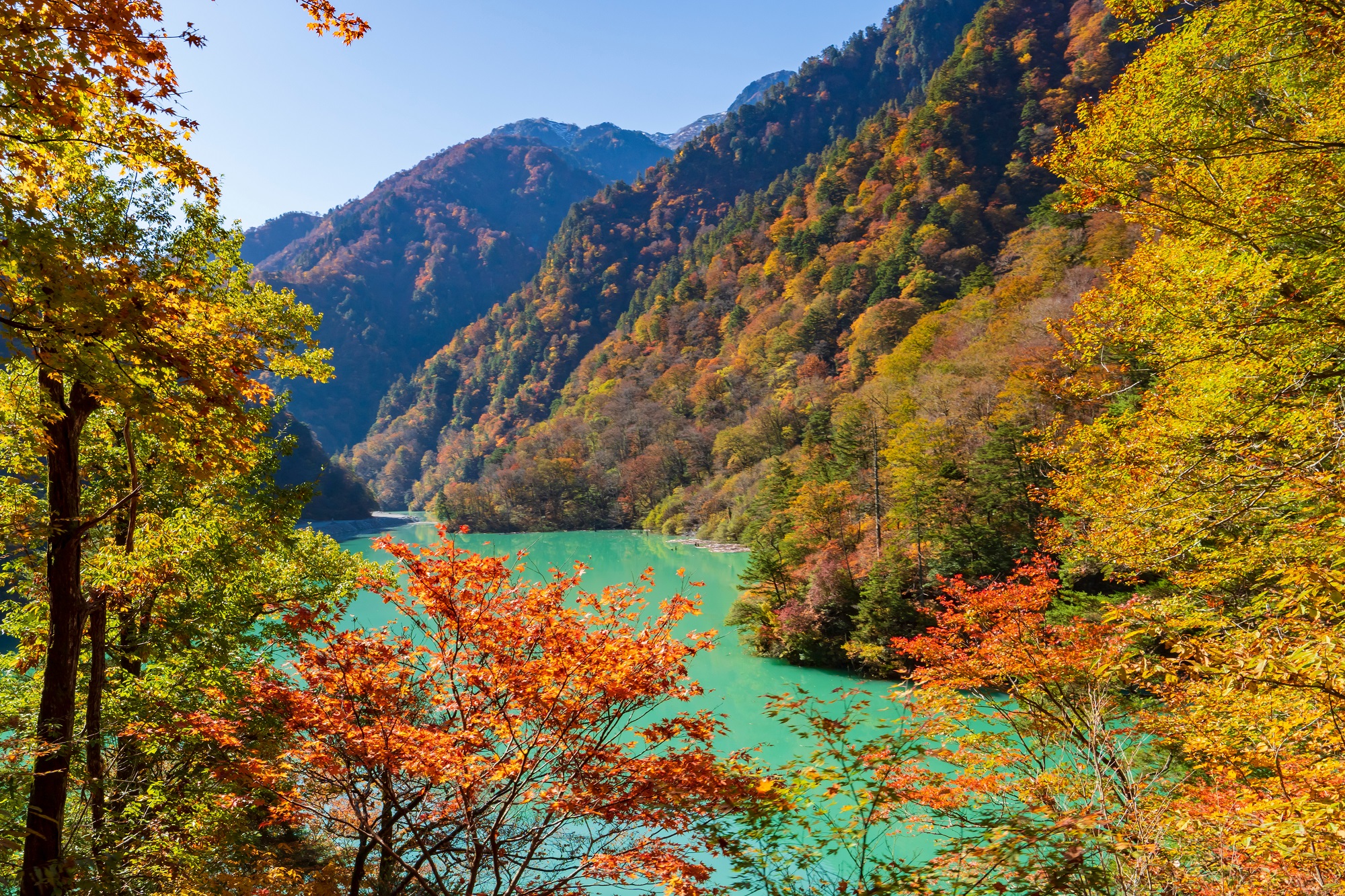Autumn Leaves/紅葉
History of Autumn Leaves and Foliage Viewing
In Japan, which has four distinct seasons, many trees begin to turn red and yellow in autumn. This phenomenon occurs when broadleaf trees turn from green to yellow or red as a preparatory stage before their leaves wither and fall, to protect themselves from cold and dryness during the winter. Depending on the type of tree, some turn yellow while others turn red. Representative trees with yellow changing leaves include ginkgo, plane trees, and hackberry, while those resplendent in red leaves include momiji maple, kaede maple, and the native Japanese dodan-tsutsuji shrub.
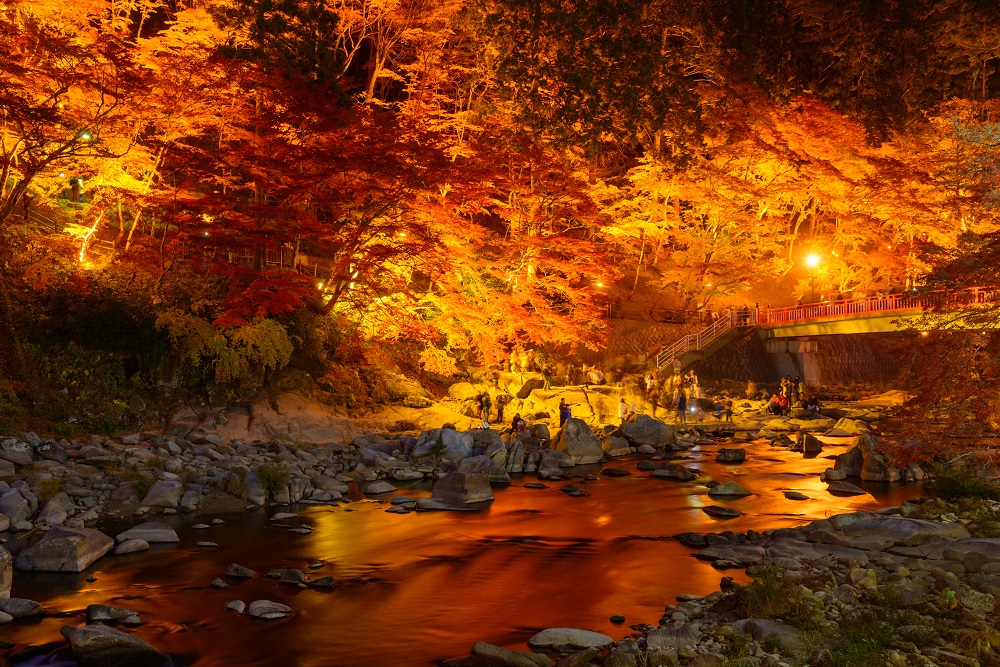
The history of leaf peeping is long, and many phrases describing autumn leaves appear in Japan's oldest existing poetry collection, Man`yoshu (The Collection of Myriad Leaves), said to have been compiled in the late 8th century. At that time, autumn leaf viewing was popular among aristocrats appreciating the leaves in order to compose poems, and it was not until the Edo period (1603-1868) that it became a popular pastime for the general public. When the 8th shogun of the Edo shogunate, Tokugawa Yoshimune (1716-1745) transplanted many cherry trees to Mt. Asuka to create a cherry blossom viewing spot, he also planted a large number of maple trees so autumn might be enjoyed as well. It is thought that people began to enjoy viewing autumn leaves from this time, just as they do today.
Guidelines on How to Enjoy Autumn Foliage Viewing
There are endless ways to enjoy the autumn foliage, such as while hiking, soaking in hot springs, enjoying the contrast between the foliage and buildings such as castles and temples, and viewing the changing leaves from a vehicle. If you come to Japan during the autumn foliage season, be sure to enjoy viewing the changing leaves.
General foliage viewing rules:
・Do not damage the trees.
Some trees can be killed when scratched or damaged, if bacteria enters the breach. Try not to break branches or remove leaves.
・Do not pick plants.
Some plants, depending on their type and location, are managed for protection and it may be illegal to collect them in whole or part.
・Do not enter restricted areas.
Stay away from areas that are off-limits in parks, gardens, or on facility grounds. Also, when hiking in the mountains, be careful not to deviate from hiking trails.
・Be sure to take any garbage home with you.
When enjoying autumn foliage viewing, think of all the others who do too, and do not leave your garbage behind. Be sure to take it back home so that the next visitors can enjoy themselves in peace.
Additionally, there may be other rules depending on the location, such as prohibitions on photography. Remember to be careful not to become so absorbed in taking pictures that you disturb others. Be sure to check for special guidelines, as they may be different from those issued in previous years due to infection control measures.
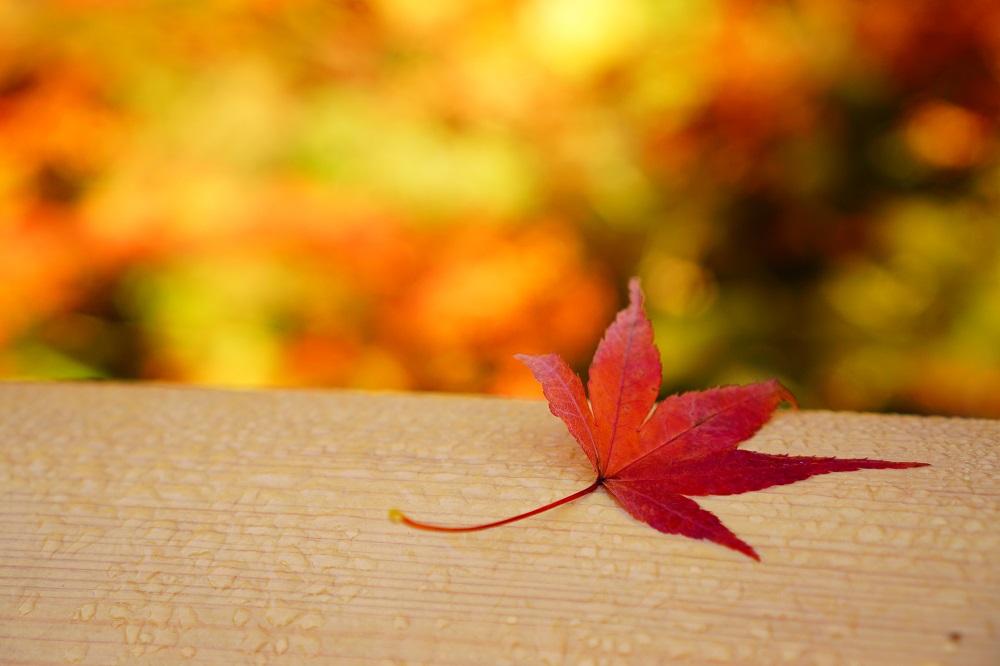
Recommended Autumn Foliage Viewing Spots in the Chubu Region
Aichi
Higashiyama Zoo and Botanical Gardens (Nagoya City)
Higashiyama Zoo and Botanical Gardens is a municipal zoo and garden located in Higashiyama Park in Nagoya City. The garden consists of a zoo with many popular animals including "Shabani," the famous handsome gorilla, and a botanical garden with 7,000 plant species on display, spread out and taking advantage of the natural terrain. In autumn, about 500 trees change color, and there are many attractions such as vivid five-color maples with a mixture of red, orange, yellow, lime, and green, and whimsical upside-down maples reflected on the surface of the water in the pond. During the fall foliage season, the gardens are illuminated at night.
Click here for more on Nagoya City.
Jakkoin Temple (Inuyama City)
Jakkoin Temple, also known as Momiji-dera, Maple Leaf Temple, is located on a hill along the Kiso River and is famous for its autumn foliage. There are approximately 1,000 maple trees in the precincts of the temple, and the sight of the many giant trees turning a brilliant red is truly breathtaking.
Click here for more on Inuyama City,
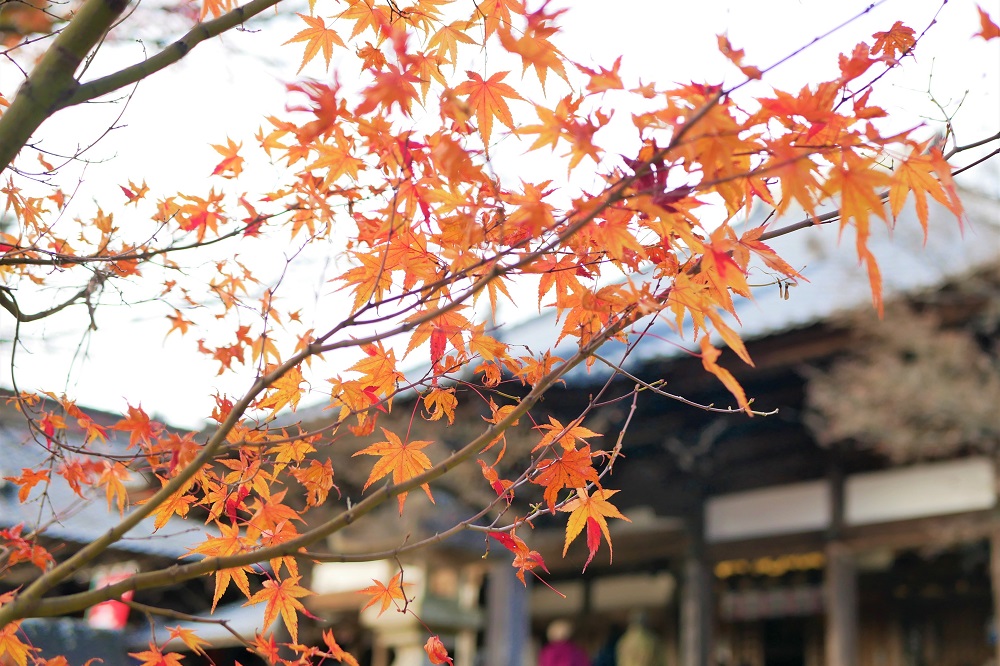
Shizuoka
Hokoji Temple (Hamamatsu City)
Hokoji Temple, founded in 1371, is a representative Zen temple in the Tokai region. The vast grounds include the Daihondo (main hall), Hansobo Shinden (temple where the guardian god of Hokoji is enshrined), Kaisando (temple hall commemorating its founder), and the three-story pagoda, (sought to protect supplicants from bankruptcy as it did its creator). During the fall foliage season, the area is illuminated at night, and the harmony between the red turtleback bridge and the autumn leaves is fantastically beautiful.
Click here for more on Hamamatsu City.
Atami Baien Plum Garden (Atami City)
The Atami Baien Plum Garden, opened in 1886, is known for its early-blooming plum trees, but the park is also home to Japanese maple, kaede maple, and ginkgo trees, which are said to be the last to change color. The Atami Baien Plum Garden is unique in that you can enjoy both plum blossoms and autumn leaves at the same time, as the early plum blossoms are in full bloom in November. During the fall foliage season, a maple tree festival is held and the area is illuminated.
Click here for more on Atami City.

Nagano
Togakushi Plateau Kagami-ike Pond (Nagano City)
Kagami-ike is a beautiful pond that reflects the Togakushi mountain range on its surface like a mirror, as its name suggests. The autumn foliage can be enjoyed from late September to late October every year. On a windless day, the reflection of the vibrantly red trees mirrored on the surface of the pond is breathtaking.
Click here for more on Togakushi.
Shirahone Onsen (Matsumoto City)
Shirahone Onsen rests a quiet area surrounded by the mountains and valleys of the Northern Alps, and features mildly acidic, skin-friendly hot springs that turn cloudy when the clear water comes into contact with the air. Soaking in the hot spring while gazing at the beautifully colored beech and oak trees by day or the stars at night makes for a blissful bathing experience.
Click here for more on Matsumoto City.

Gifu
Mount Kinka (Gifu City)
Mt. Kinka is located in the center of Gifu City, with Gifu Castle at the summit and Gifu Park at the foot of the mountain. Every year in mid-November, maple and ginkgo trees turn the whole area into a brilliant colorful display, and the view from the mountaintop observatory and ropeway is truly spectacular.
Click here for more on Gifu City.
Shirakawa-go (Shirakawa Village)
Shirakawa Village, located in the northwestern part of Gifu Prefecture, an undulating agricultural village surrounded by mountains, is known for its unique gassho-zukuri houses, which resemble the shape of praying arms with the left and right palms together. Every year from late October, when the changing leaves are at their peak, the gassho-zukuri houses framed by the colored trees and mountains make for an especially idyllic sight. The Gassho-Zukuri Minka-en Outdoor Museum in particular is illuminated.
Click here for more on Shirakawa-go.
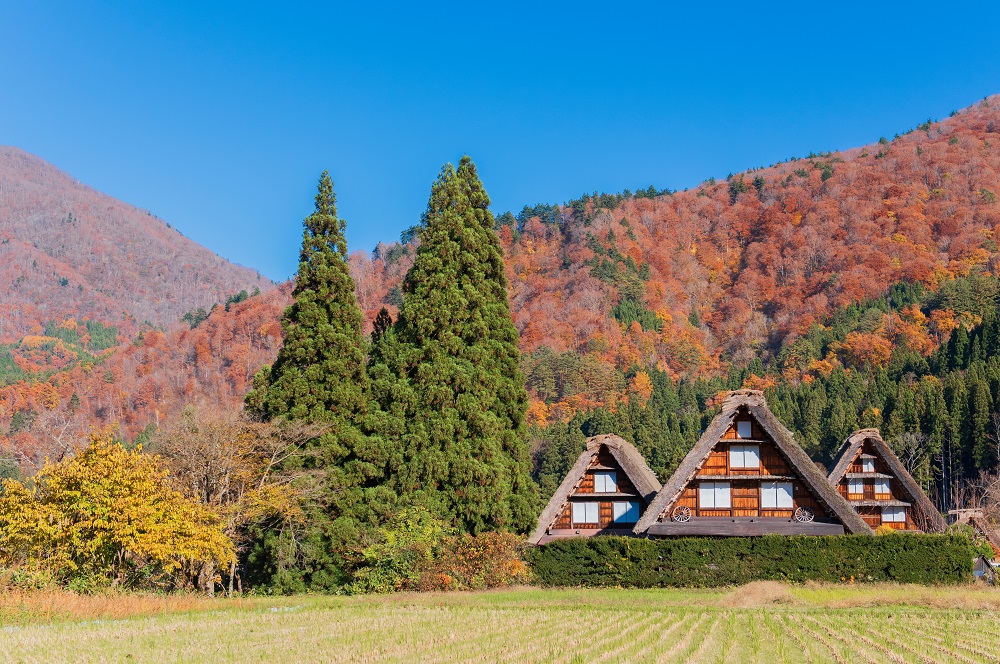
Mie
Ise Jingu Shrine (Ise City)
The sprawling Ise Jingu Shrine encompasses not only the Naiku Inner Shrine (formally called Kotai Jingu) and Geku Outer Shrine (officially known as Toyoke Daijingu), but also 14 associated shrines, 43 auxiliary shrines, 24 subordinate shrines, and 42 minor shrines; a total of 125 Shinto shrines. In the riverside purification area of the Naiku Shrine of Ise Jingu, the colorful reflections of the autumn leaves on the mirror-like surface of the Isuzu River are as beautiful as a painting. Combined with the mystical air of the shrine, a visit will be an unforgettable experience.
Click here for more on Ise Jingu.
Ueno Park (Iga City)
There are many attractions in Iga-Ueno Park, including Iga Ueno Castle, the Iga Ninja Museum, Haiseiden Hall built for haiku poet Matsuo Basho, and the Basho Memorial Museum. Maples are planted throughout the park and are usually at their best from mid-November. The vista of the quaint structure Haiseiden Hall among the autumn foliage, with a red carpet of fallen maple leaves, is a must-see.
Click here for more on Iga City
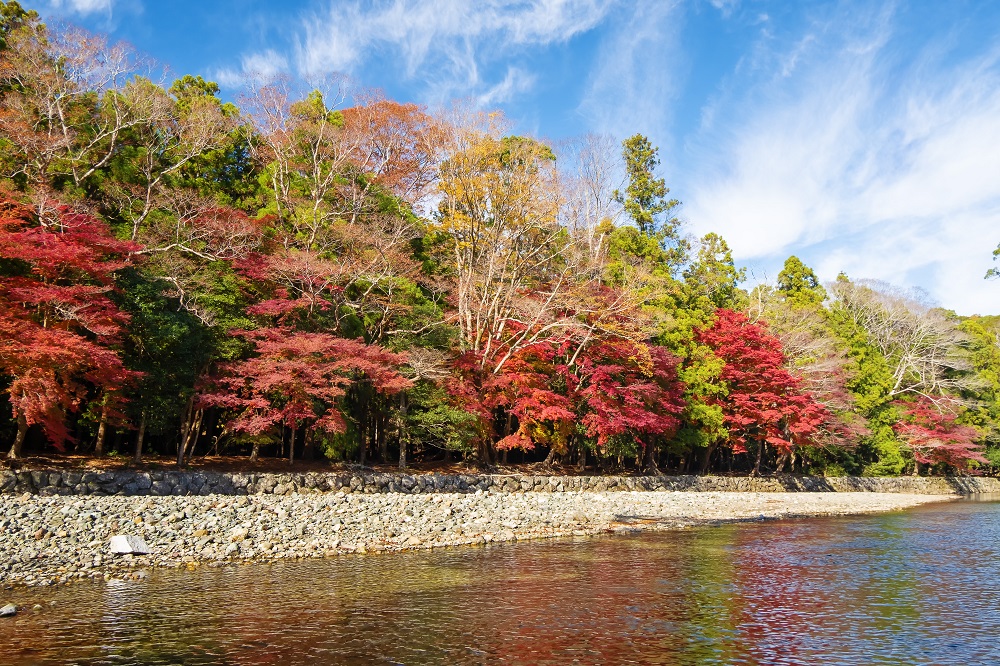
Shiga
Hieizan Enryakuji Temple (Otsu City)
Hieizan Enryakuji Temple is the head temple of the Tendai sect of Buddhism in Japan, with a vast temple area on Mount Hiei, which straddles Shiga and Kyoto Prefectures. On Mt. Hiei, trees usually begin to change color in late October, and the "Maple of Hiei" festival is held primarily in the Yokogawa area, said to be one of the best places for viewing the autumn leaves. The view of the vermilion-lacquered building of the temple’s Yokogawa Chudo Hall against the trees turning red and yellow is breathtaking.
Click here for more on Enryakuji Temple.
Hikone Castle Genkyuen Garden (Hikone City)
Genkyuen is a daimyo garden in the pond promenade garden style, located in the northeast of the Hikone Castle grounds. In mid-November, visitors can look up at Hikone Castle through the autumn leaves of Japanese maple, rowan and katsura trees. The changing leaves are illuminated at night, and their reflection on the pond in the famous garden is spectacular, in quite a different way from the daytime.
Click here for more on Hikone Castle.

Fukui
Eiheiji Temple (Eiheiji-cho)
Eiheiji Temple, founded in 1244 by Master Dogen, is a Zen training center and the head temple of the Soto sect of Buddhism in Japan. Located deep in the mountains, Eiheiji Temple is home to more than 70 austere halls and towers, which contrast beautifully with the brightly colored trees.
Click here for more information about Eiheiji Temple.
Maruoka Castle (Sakai City)
Maruoka Castle was built in 1576 and is one of only 12 castles built before the Edo period to still have the original castle tower keep. The adjacent Kasumigajo Castle Park was built to commemorate the 400th anniversary of the construction of Maruoka Castle and is worth a visit when the trees turn beautiful colors and the castle can be viewed through the autumn leaves.
Click here for more information about Sakai City.
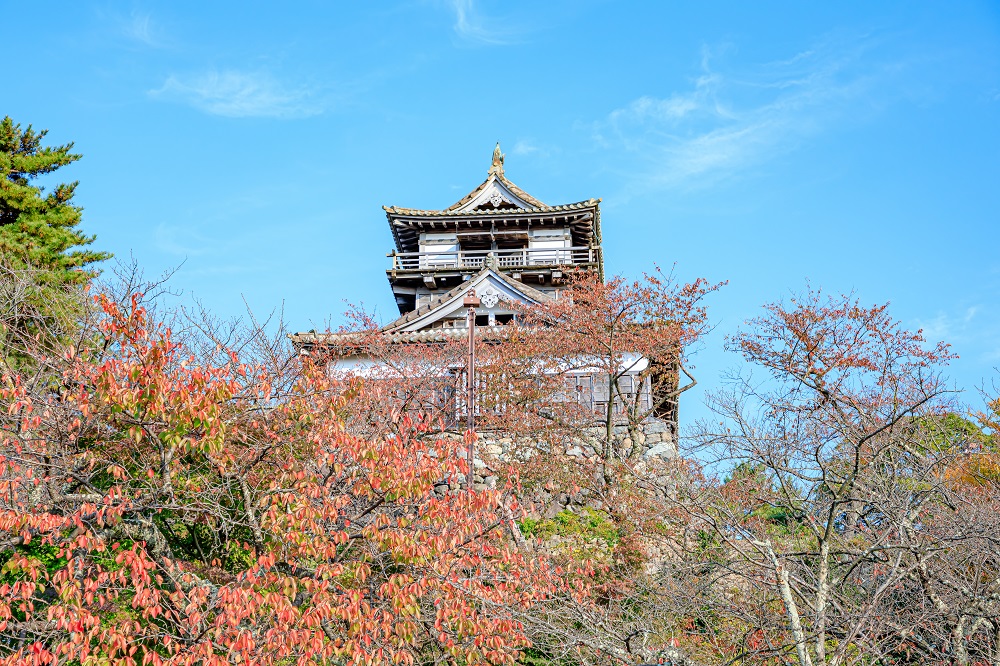
Ishikawa
Kenrokuen Garden (Kanazawa City)
Kenrokuen Garden, one of the three most famous gardens in Japan, was created over a long period by a succession of Kaga feudal lords. The autumn foliage is usually at its best around November, and visitors can enjoy a breathtaking panoramic view of the beautifully colored trees if they climb up to the viewing platform. In November, winter damage preventative measures are taken, when branches of trees are suspended by ropes and wires to prevent them from breaking under the weight of snow. During this time of year, the area is illuminated, and the contrast between the suspended branches and the autumn leaves is fantastically beautiful.
Click here for more on Kenrokuen Garden.
Kakusenkei Gorge (Kaga City)
Kakusenkei Gorge is a 1.3 km section of the Daishoji River valley from Kurotani Bridge to Korogi Bridge, that flows through the 1300-year-old Yamanaka Onsen spa resort. A promenade is maintained, and visitors can enjoy a tour between bridges while viewing the autumn leaves. The Korogi Bridge is made of all cypress, the Ayatori Bridge is an S-shaped bridge designed by flower arrangement artist Teshigahara Hiroshi, and the Kurotani Bridge is a massive stone bridge, each displaying a different atmosphere.

Toyama
Kurobe Gorge (Kurobe City)
Kurobe Gorge is one of the most famous V-shaped gorges in Japan. The total length of the valley is 86 km, and the difference in elevation between the summit and the valley floor is approximately 3,000 m, making for a unique scenic spot. Usually around the end of October, the autumn colors of the leaves begin to appear, and the entire mountain is decorated with a mixture of red and yellow leaves contrasting with perennial greenery. The Kurobe Gorge Trolley Train is a 20-km-long railroad that runs between Unazuki Station and Keyakidaira Station, a spectacular course especially when winding through the autumn leaves. Enjoy the scenic journey, which takes about 1 hour and 20 minutes each way.
Click here for more on Kurobe Gorge.
Murodo(Tateyama-machi)
Murodo is located at an altitude of 2,450 meters and is the best point from which to view the Tateyama Mountain Range when adorned with autumn leaves. Murodo is home to many sights, including Japan's oldest mountain lodge, Tateyama Murodo Sanso, and Mikuriga-ike, the most beautiful volcanic lake in the Northern Alps, which contrasts beautifully with the vivid red, yellow, and green colors of the trees.
Click here for more on Tateyama Kurobe Alpine Route.
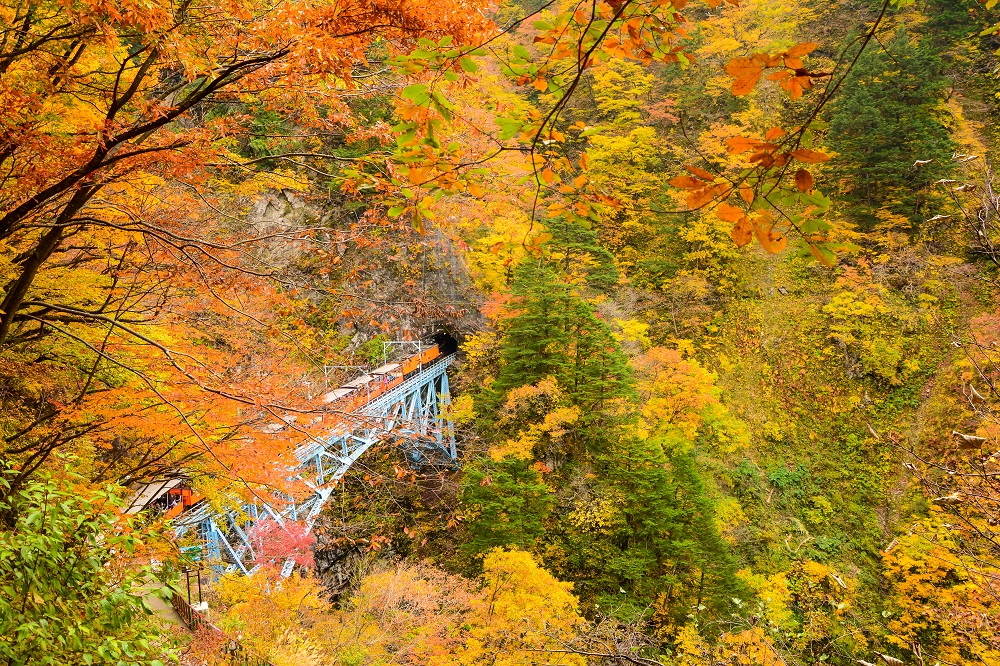
Destinations
Nagoya Castle/名古屋城(Aichi)
The icon of Nagoya is without a doubt Nagoya Castle (Nagoya-jo), which was built by Tokugawa Ieyasu after the Battle of Sekigahara in the year 1600. This castle, intended as the residence of the Owari....
Inuyama Castle/犬山城(Aichi)
Built in 1537 by Oda Nobuyasu, the uncle of the famous warlord Oda Nobunaga, Inuyama Castle is the symbol of Inuyama City. The castle's keep is the oldest still standing in Japan, and the castle as a ....
Meiji Mura/明治村(Aichi)
Open-air museum Meiji Mura opened in 1965 to preserve and exhibit Meiji architecture. Buildings of artistic and historical value, mainly from the Meiji Era (1868-1912), have been relocated and restore....
Kenrokuen/兼六園(Ishikawa)
Kenrokuen is one of the three most famous gardens in Japan, alongside Okayama Korakuen in Okayama City, Okayama Prefecture, and Mito Kairakuen in Mito City, Ibaraki Prefecture. As one of the most famo....
The Tateyama Kurobe Alpine Route/立山黒部アルペンルート(Toyama)
The Tateyama Kurobe Alpine Route is one of the world's most famous mountain tourism roads, stretching 37.2 km through the 3,000-meter-high peaks of the Northern Alps and connecting Toyama and Nagano p....
Kurobe Gorge/黒部峡谷(Toyama)
Kurobe Gorge in Toyama Prefecture is one of the most famous V-shaped gorges listed in the "Three Great Valleys" and the "100 Best Unexplored Areas" in Japan. It spans a total length of 86 km and an el....

